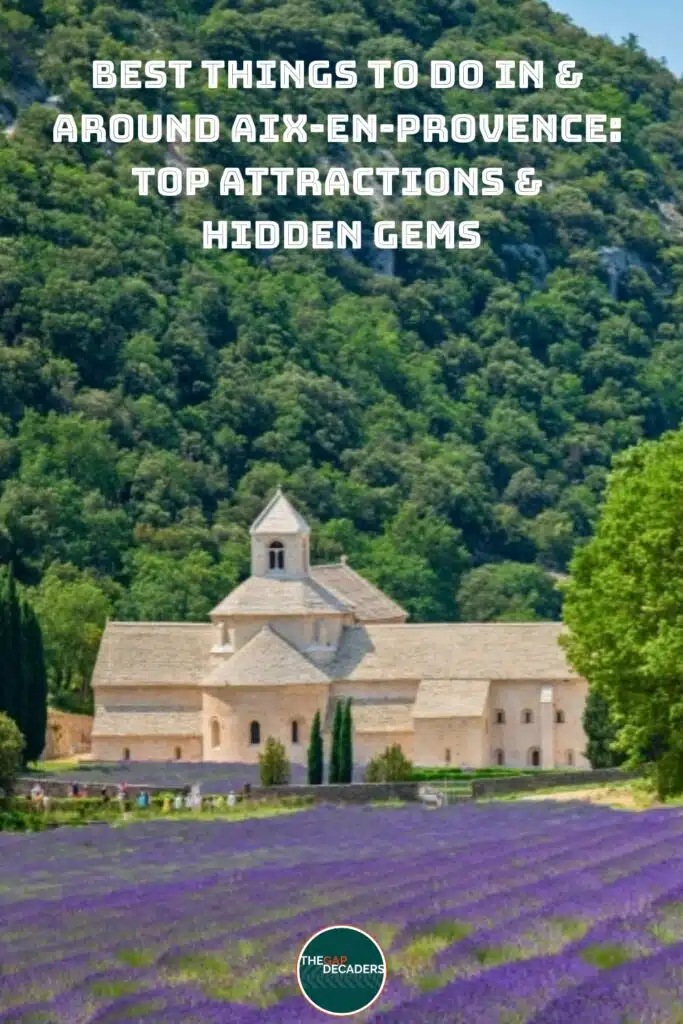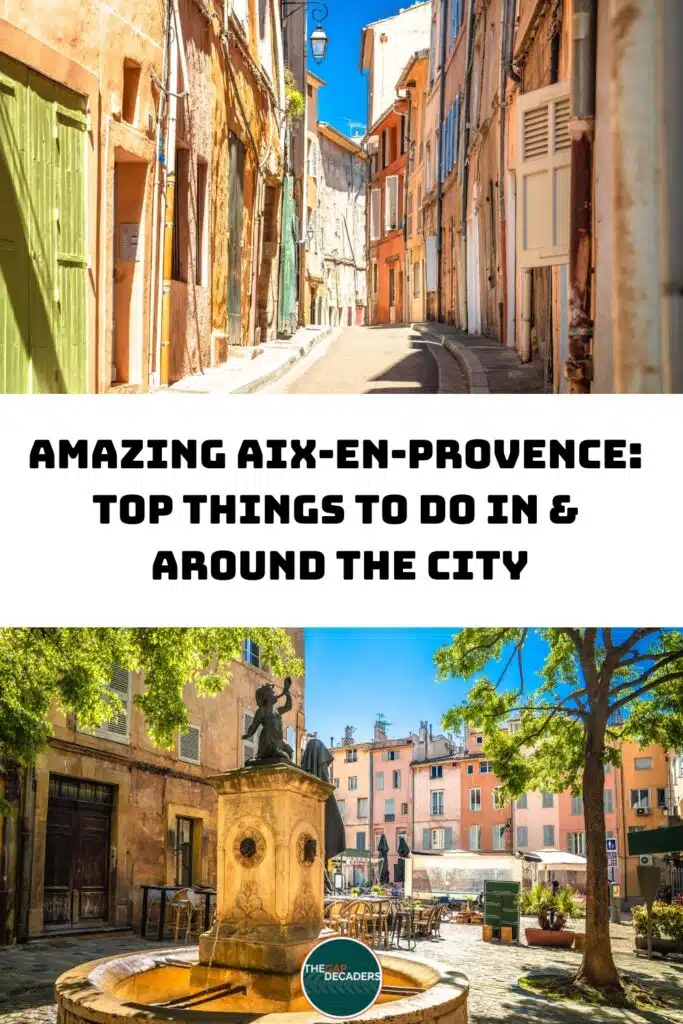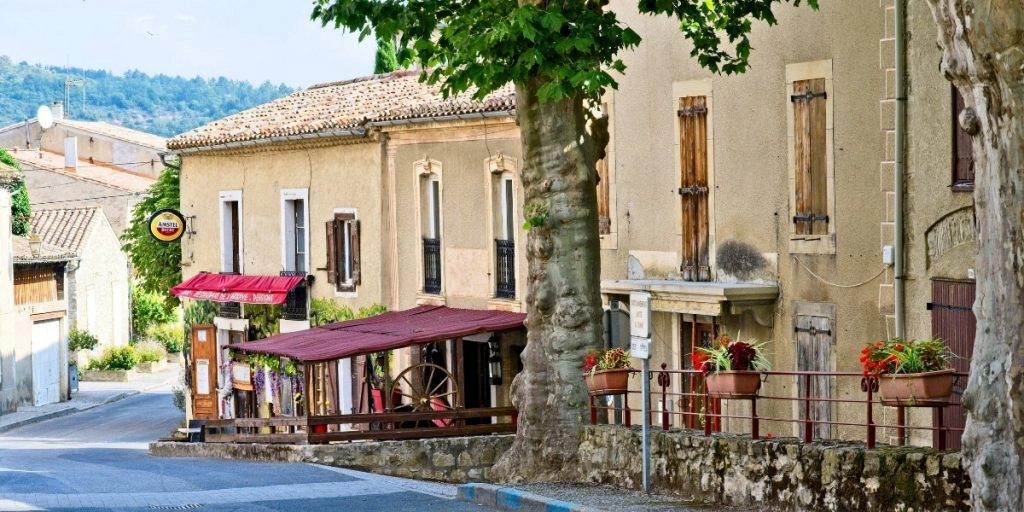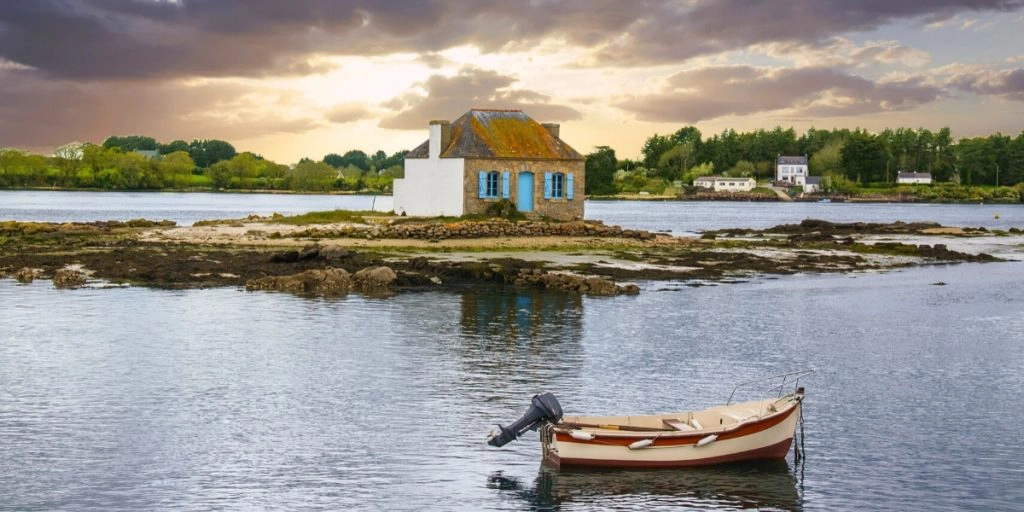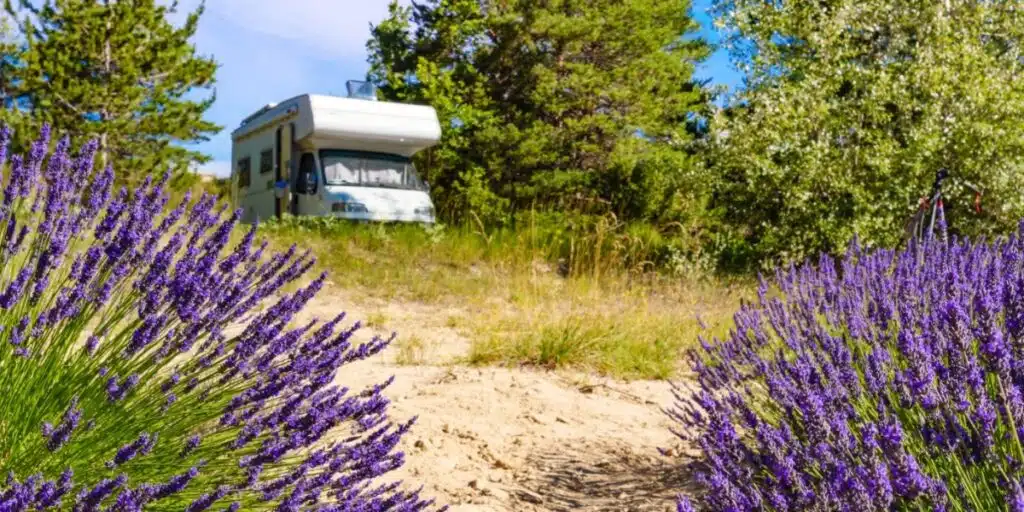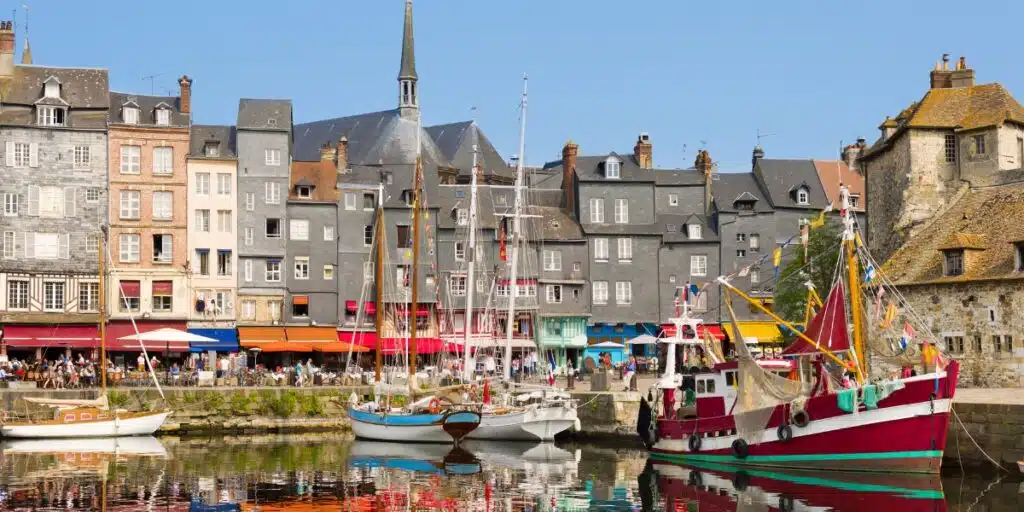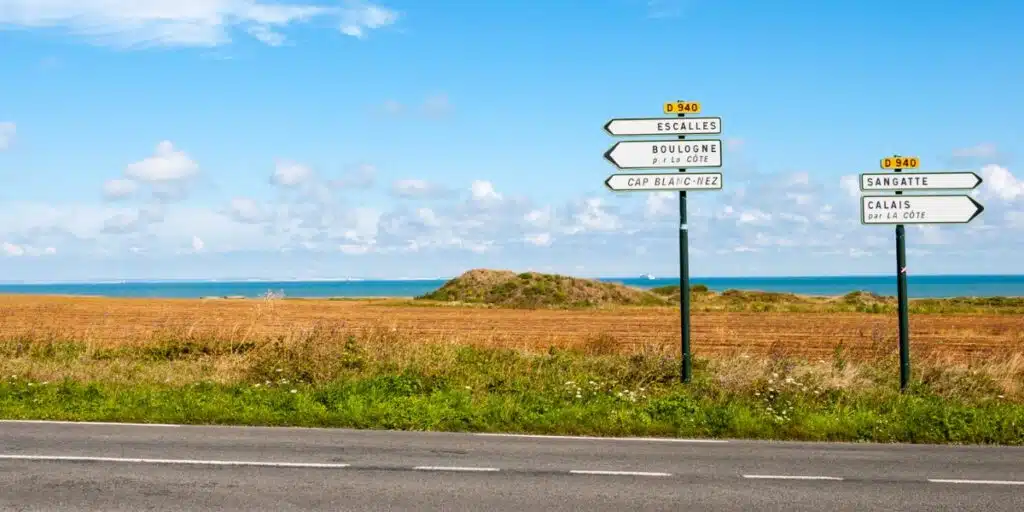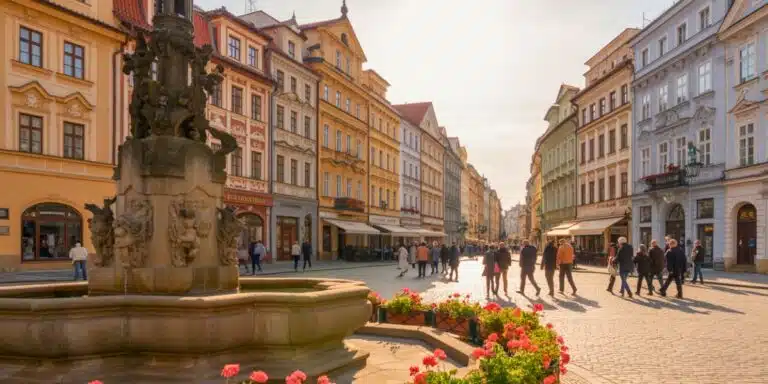This post may contain affiliate links, from which we earn an income. Click here to read our affiliate policy.
Aix-en-Provence, with its sun-drenched streets and vibrant cultural scene, embodies the quintessential charm of Southern France. In the heart of Provence, this picturesque city captivates visitors from around the world, us included!
From exploring its historic architecture and charming markets to savoring the exquisite local cuisine and wandering through lush lavender fields, Aix-en-Provence has so much to see and do, and is a destination well worth discovering.
This Aix-en-Provence guide aims to show you all the best bits of this intimate city. As you read, let us take you on a journey through the best things Aix-en-Provence and the surrounding countryside can provide. I guarantee there’s something special on the list just waiting to jump out at you and be discovered!
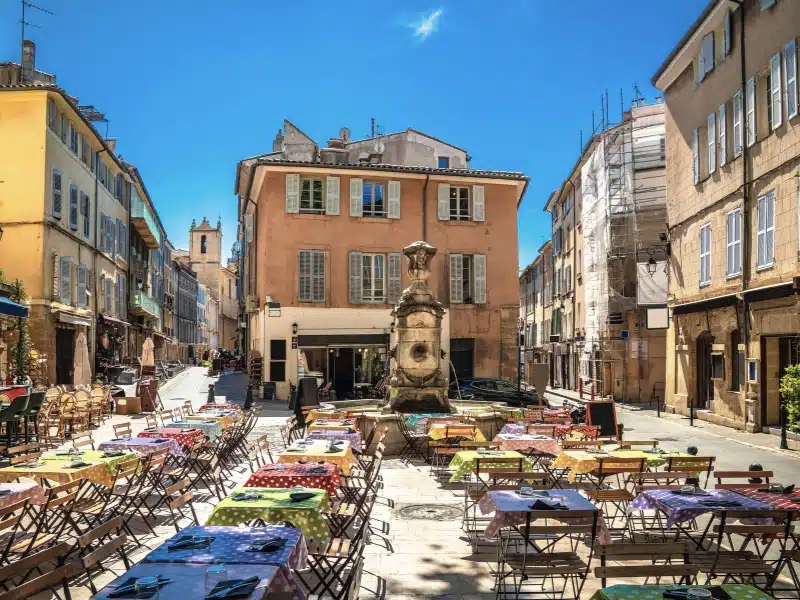
1. Discover Fontaine de la Rotonde and Cours Mirabeau
Most guests’ introduction to Aix, especially backpackers arriving by bus, is the impressive Fontaine de la Rotonde and walking along the iconic Cours Mirabeau, the city’s grand boulevard. This lively avenue is the city’s beating heart, where locals and visitors gather to sip coffee, people-watch, grab a bite to eat, and shop ’til they drop.
Somehow, it’s spaciously designed while simultaneously feeling homely and familiar. All of the cafés, restaurants, and shops are housed in grand 17th and 18th-century mansions, softly lined with elegant and shady plane trees, making it the perfect place to start your exploration. A few hours here feels like a few minutes since there’s so much to take in.
Halfway along the Cours Mirabeau is the curious 17th-century Fontaine Moussue, also known as the Mossy Fountain. It is covered entirely in lush green moss. Its warm thermal waters, which flow at a constant temperature of around 18°C (64°F), have encouraged the growth of the thick moss that gives Fontaine Moussue its characteristic, almost otherworldly look.
As you go, snag up a tasty crêpe or a Croque Monsieur from one of the many street vendors you’ll likely encounter. They’re cheap, filling, and make great snacks on the go!
Pro Tip: Come early in the morning when the soft light starts to filter through the trees. It’s less crowded and an ideal time for those Instagram selfies!
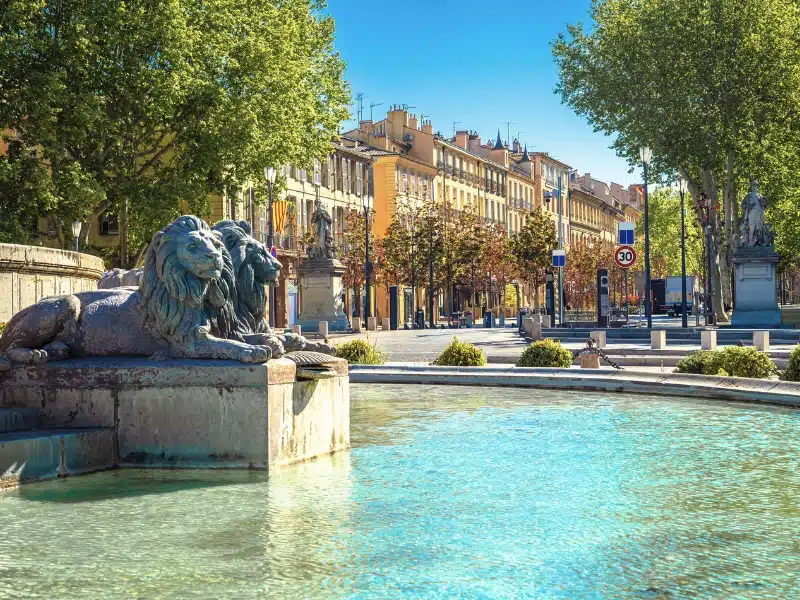
Is this your first time visiting France? Get all the information you need in our France Travel Guide, including what to pack, the best time of year to go, getting there and practical tips to help you have the best trip!
2. Explore the Narrow Pathways of Old Town (Vieil Aix)
Just a stone’s throw from the Cours Mirabeau lies the Old Town, a labyrinth of narrow streets, hidden squares, and historical buildings where most of the walkways are barely wide enough for a car to pass through and mostly not even that!
As you walk around the Vieil Aix, be prepared for hundreds of stops in charming shops, patisseries (French bakery), boutiques, and stores specializing in hand-crafted goods. Many of these businesses have been generationally owned for decades and have unique stories to share.
One of the highlights in this section is the beautiful Saint-Sauveur Cathedral, which, if you can believe it, started construction in the 12th-century and didn’t finish until the 16th! Talk about dedication. Also, the stunning town hall, l’Hôtel de Ville, and its iconic clock tower are another stop that should make the list.
This excellent Aix-en-Provence walking tour with a Franco-British local shares all the top spots, a few hidden gems and lots of history and interesting facts about the city. We promise you will be entertained and enlightened as you stroll through Aix’s charming alleys and squares.

3. Visit the Atelier de Cézanne
No visit to Aix-en-Provence is complete without paying homage to one of its most famous residents, Paul Cézanne, and checking out his Atelier de Cézanne studio. This is where, for the last four years of his life, Cézanne painted some of his most notable works, ushering the age of modern art into the next century.
This biographical museum is located on the city’s outskirts and has been preserved almost exactly as it was when he worked there. It offers a timeless glimpse into his life and creative process. Walking around this tiny yet captivating workspace will briefly transport you to life in those simpler times.
Pro Tip: Combine your visit with a short hike or ebike tour up Cézanne’s famously painted Montagne Sainte-Victoire, which dominates the picturesque Luberon region. The views are breathtaking, especially when the sun is setting.
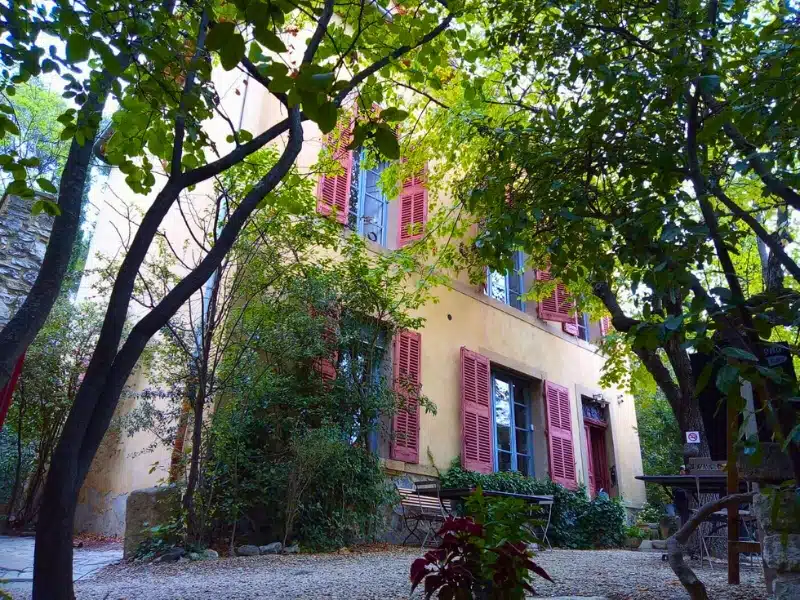
4. Wander the Markets
Aix en Provence is famous for its vibrant street market scene. Spend enough time roaming the city, and you’ll likely run into one. Besides an overload of colors, smells, and sounds, each enticing market provides a wide variety of goods, from fresh produce, meat, and fish to flowers, antiques, and clothing.
If time only allows for a few, the Marché Place Richelme is a must! This traditional Provence market is held every morning in a square shadowed by giant plane trees and is particularly great for food lovers looking for that delicious taste of the South of France.
Our second recommendation is the Place de l’Hotel Ville flower market in the city center, held on Tuesday, Thursday, and Saturday mornings. Prepare for your senses to be overwhelmed by stalls overflowing with fresh flowers, from fragrant roses and colorful tulips to Provencal sunflowers and of course, lavender.
Pro Tip: Take your time sampling the various delights, such as the provençal olives, local tomatoes, lavender, honey, and goat cheeses, all of which make great take-home gifts for friends and family.
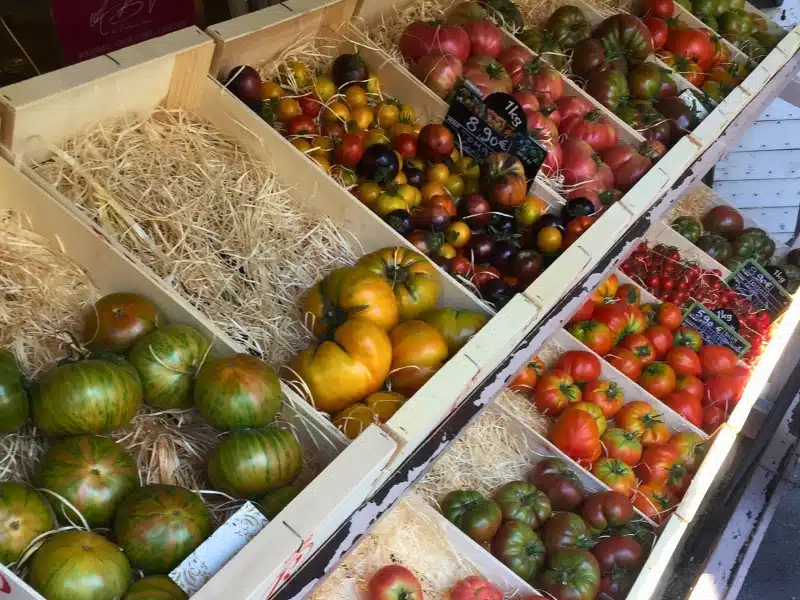
Make sure you have travel insurance you can trust when visiting France. We recommend True Traveller for their 5-star TrustPilot reviews, variety of cover options, best activities cover as standard, great prices, and excellent service.
5. Discover the Musée Granet
Some of the best artworks ever created reside in France, and it’s one of the top reasons to visit. The entire country is filled with museums showcasing some of the greatest pieces in art history, and the Musée Granet is no exception. An afternoon here is a must for any self-proclaiming art enthusiast.
The museum’s building has an intriguing history. It was built in the 1670s during the Baroque period and made a priory for the Knights of Malta, a military and religious order dating back to the Crusades! One step inside is like transporting back a thousand years. How can you say no to that?
Inside, you’ll find a huge collection of ancient and modern masterpieces, including works by Manet, Picasso, Rembrandt, and Van Gogh. The hallways are littered with sketches, pastels, sculptures, tapestries, and more. It doesn’t stop there. Venture further back in time with notable Greek, Roman, and Egyptian antiquity items, such as coins, pottery, and amulets, some of which date to 1500 BCE. Simply incredible.
Pro Tip: Consider getting the City Pass at the city’s tourist office, which provides free entry to many attractions, discounts, guided tours, unlimited transportation, and more!
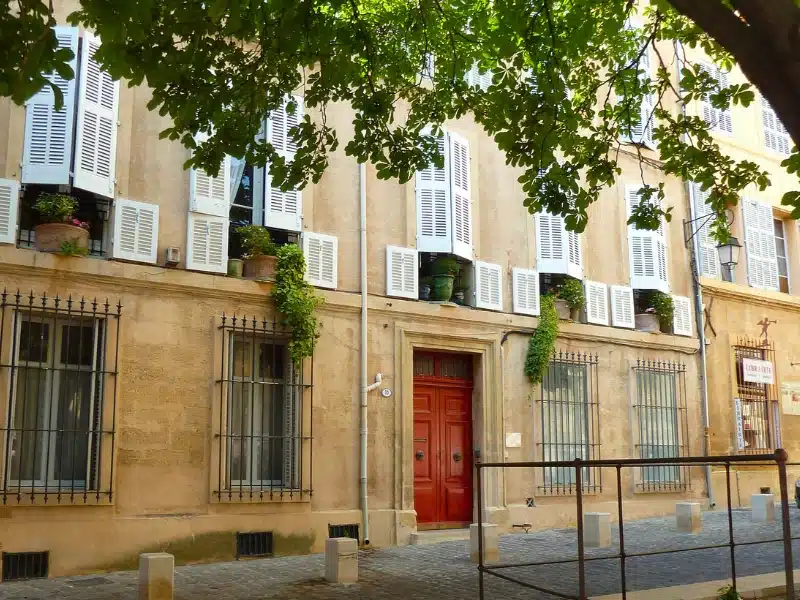
6. Relax at Thermes Sextius
Speaking of the classical era, another historical point of interest is the thermal baths of Thermes Sextius. A highly valued hot spring established by the Romans was revived during the Renaissance and has since been converted into a modern treatment and wellness center. Booking a stop here is the perfect way to take a load off after a long day of sightseeing,
Centrally located, this luxurious spa is committed to relaxation and rejuvenation. Its range of treatments includes but isn’t limited to – thermal pools, massages, saunas, steam baths, body wraps, facials, and other beauty therapies. All while being perfectly integrated with parts of the original Roman baths.
There’s nothing quite like lounging at the pool surrounded by 2000-year-old decor. The atmosphere created here is nearly impossible to replicate, and every second spent offers a small glimpse of what life was like when walking around in the sandals of the ancients. This is an experience you’ll never forget.
Pro Tip: To make the most of it, join a guided tour of the ruins that explains the bathing practices of the times and the significance of the architecture they created. It’s a fascinating way to blend the old with the new!
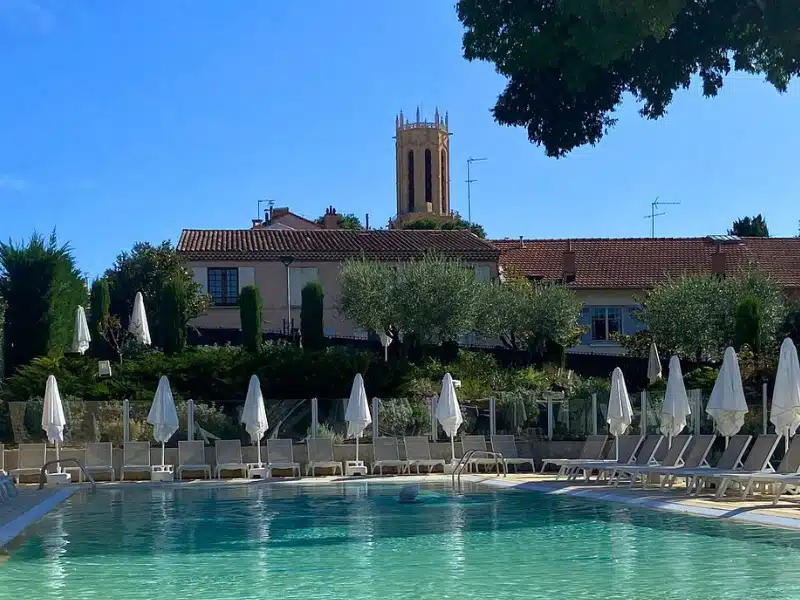
7. Explore Hôtel de Caumont Art Center
The Hôtel de Caumont Art Center is a renowned cultural venue in the historic Mazarin district and is housed in a beautifully preserved 18th-century mansion. Built between 1715 and 1742, the Hôtel de Caumont is a striking example of classical architecture, with its grand façade, intricate staircase, and meticulously maintained gardens reflecting the opulence of the period.
Today, the Hôtel de Caumont is celebrated for its high-profile temporary exhibitions, which feature works by prestigious artists spanning various periods and styles, from classical to modern art, and the elegant ambiance of the Café Caumont, which overlooks the art center’s beautiful French gardens.
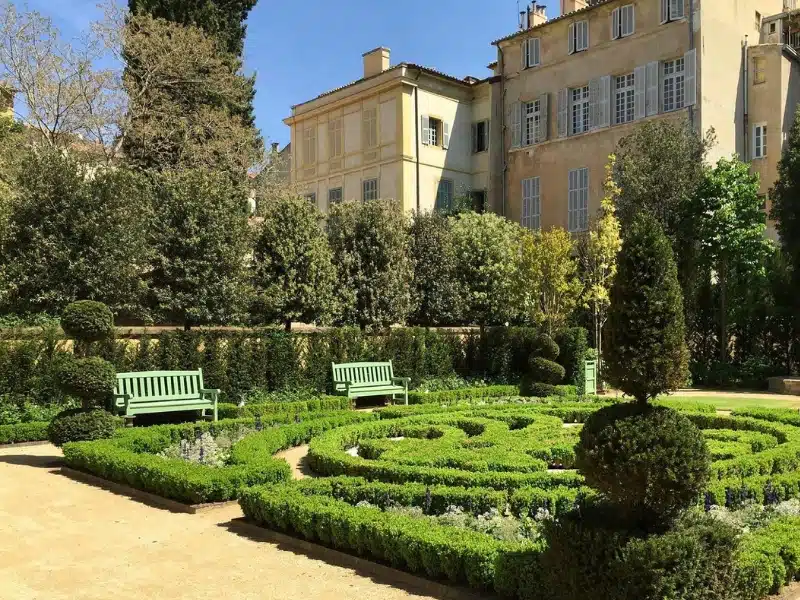
8. Visit Fontaine des Quatre Dauphins
A three-minute walk from the Hôtel de Caumont is the Fontaine des Quatre Dauphins, one of the most iconic and charming fountains in Aix, known as the ‘town of a thousand fountains’!
This fountain, which dates back to 1667, was designed by Jean-Claude Rambot, a prominent architect of the time. It stands in a small, picturesque square at the intersection of several narrow streets, which only adds to its quaint and intimate design.
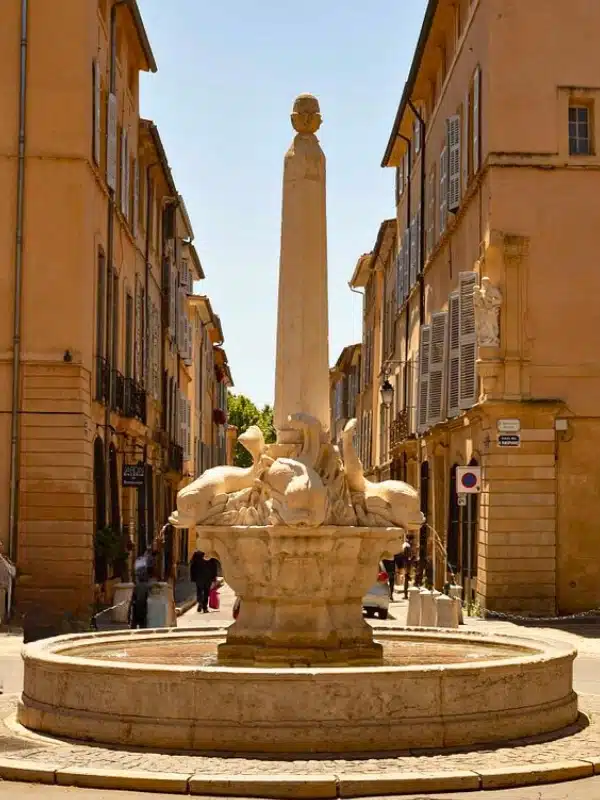
Other France Travel Ideas
9. Enjoy a Day Trip to the Luberon
While Aix-en-Provence itself has plenty to offer, it’s also an ideal base for exploring the beautiful nearby countryside, specifically the Luberon region, dominated by the distinctive Mont Sainte-Victoire. The area is full of plus beaux villages, picturesque lavender fields, and exciting outdoor activities that’ll keep anybody begging to come back for more.
All within about an hour away, travelers can get lost roaming the must-visit villages of Gordes, Roussillon, and Bonnieux, walking cultural sites like the Château de Lourmarin, Abbaye de Sénanque, Château de Lacoste, or exploring the natural elements of Montagne de Lure, Gorges de Régalon or Les Ocres de Roussillon.
There’s so much to see; this article section cannot possibly do it justice. Trust me when I say anybody lucky enough to spend time at a few of these amazing locales is in for a real treat!
Pro Tip: While public transport is possible, we recommend renting a car for the day or taking this highly-rated day tour of most beautiful medieval hilltop villages in the southern Luberon.
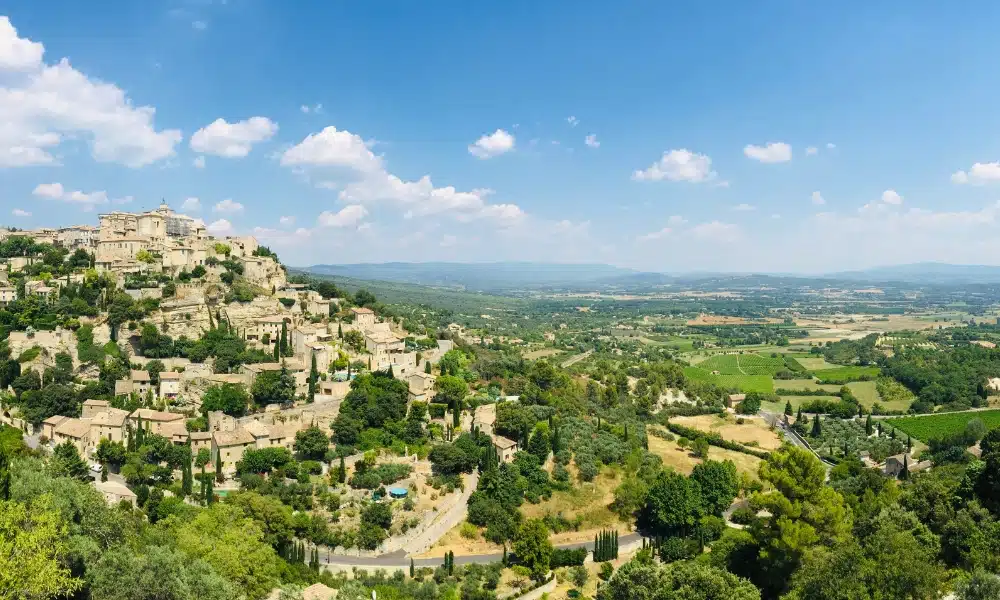
Looking for the best SIM card deals in Europe for your trip? Check out our guide to the best data SIMs in Europe and get the best deal for your trip to France.
10. Take a Wine Tour in the Coteaux d’Aix-en-Provence
Besides baguettes, the Eiffel Tower, and berets, France is renowned for its exquisite selection of rosé, white, and red wines. It ranks second worldwide in terms of production and third in consumption. To put this in perspective, it’s the 49th largest country by size, so evidently, wine is very important to them and well woven into their everyday lives.
One of the main reasons wine is so prominent and made with such care is the strict quality standards each vineyard adheres to. This, the cool-to-temperate climate, and the French terroir (the natural environment where the wine is produced) add incredible and unique flavors and complexities any amateur sommelier will adore.
The strong traditions winemakers have practiced for centuries continue in the rolling hills of the Coteaux-d’Aix-en-Provence wine region, home to some of the finest vineyards in the south of France. Learn about the winemaking process, sample some of the local vintages, and stay in one of the prestigious on-site accommodations like the Château de Fonscolombe. There really are no bad options.
Pro Tip: We recommend this half day wine tour of Coteaux d’Aix where you’ll visit family-owned wineries producing excellent wines, and learn about French winemaking from an expert guide.
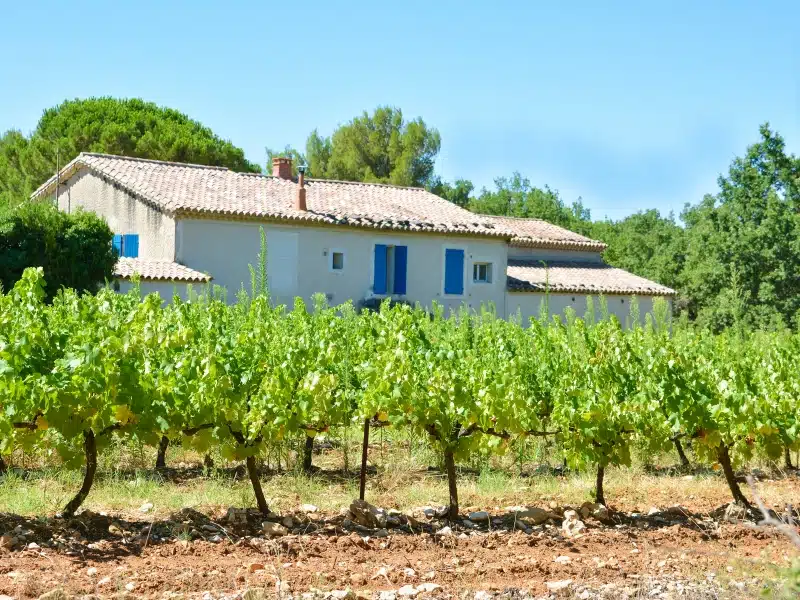
Are you visiting Aix as part of a longer road trip? A South of France road trip is the best way see this gorgeous region, and our guide to road tripping in southern France has all you need, including an interactive map, highlights and tips, to help you plan the perfect trip.
11. Visit the Local Lavender Fields
Visiting the lavender fields from Aix-en-Provence is a must, especially during the lavender blooming season, which typically spans from late June to early August. The fields offer breathtaking views with endless rows of vibrant purple flowers stretching across rolling hills often dotted with traditional stone farmhouses.
There are lavender fields spread throughout the Provence region, but the most famous ones are located around Valensole, Sault, and Gordes. You can also visit Terre Ugo, a visitor attraction with three hectares of managed lavender fields.
These lavender fields are easily accessible from Aix-en-Provence by car, allowing you to explore the fields at your own pace and enjoy the scenic drive through the picturesque Provençal countryside. The closest, and one of the most pictured, is the lavender field at Senanque Abbey, just north of Gordes, about an hour’s drive from Aix.
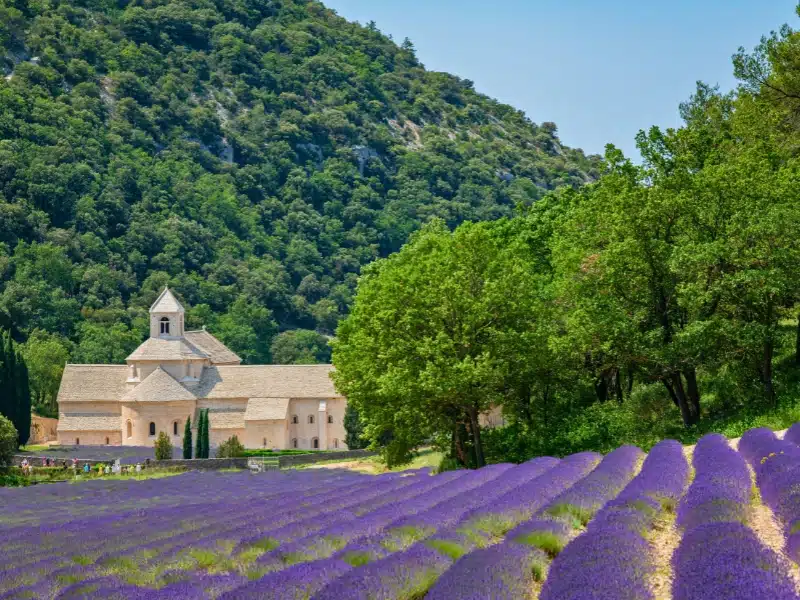
12. Visit Camp des Milles
Site Mémorial du Camp des Milles is a significant and sobering historical site a few miles outside the city. Originally a tile factory, this large complex was transformed into an internment and transit camp during World War II. It is the only large French internment camp still intact and accessible to the public, serving as a powerful reminder of the horrors of war and the consequences of intolerance.
The camp was first used in 1939 to detain enemy aliens, but after the fall of France in 1940, the Vichy government repurposed Camp des Milles to detain Jews, political dissidents, and other individuals considered undesirable by the Nazi regime. Over 10,000 people were held at Camp des Milles between 1939 and 1942, and tragically, many of these detainees were later deported to extermination camps in Eastern Europe, including Auschwitz.
Now a memorial and educational museum, Camp des Milles is dedicated to remembering the victims and educating the public about the dangers of racism, anti-Semitism, and totalitarianism. The museum includes exhibits that chronicle the history of the camp, personal stories of the detainees, and broader discussions on the themes of genocide and human rights.
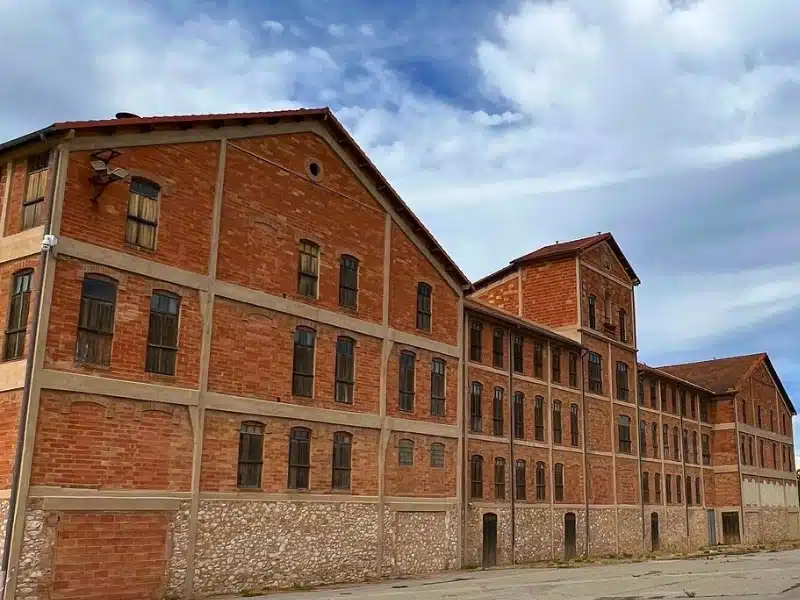
13. Sample the Local Cuisine
Aix-en-Provence is a culinary delight, offering incredible flavors that reflect the region’s Mediterranean roots. Fresh, seasonal ingredients, aromatic herbs, olive oil, and a focus on simple yet flavorful dishes characterize the local cuisine. Here’s a look at some must-try Provençal dishes and recommendations on where to enjoy them in Aix-en-Provence.
Local Cuisine Highlights
Ratatouille: A classic Provençal dish made from stewed vegetables like tomatoes, zucchini, eggplant, and bell peppers, seasoned with herbs such as thyme and basil.
Bouillabaisse: Although traditionally from Marseille, this fish stew is popular in Aix-en-Provence. It’s made with a variety of fish and shellfish in a rich, saffron-infused broth.
Aïoli: A garlicky mayonnaise that often accompanies fish, vegetables, or seafood. It’s a staple in many Provençal dishes.
Daube Provençale: A slow-cooked beef stew made with red wine, herbs, and vegetables, often served with pasta or potatoes.
Tapenade: A spread made from olives, capers, and anchovies, usually served with bread or as an appetizer.
Calissons: A local specialty candy, these almond-shaped candies are made from ground almonds, candied melon, and orange peel, topped with a layer of royal icing.
Pistou Soup: A vegetable soup made with basil, garlic, and olive oil, similar to Italian pesto.
Where to Eat in Aix-en-Provence
Henri 4 Caves Restaurant offers fine dining with a modern twist on traditional Provençal dishes. Located in a vaulted cellar, this restaurant provides an intimate atmosphere where creative dishes showcase the best local ingredients. The tasting menus are especially popular, offering a sophisticated culinary journey through the region’s flavors.
Tita is a lively café known for its eclectic and healthy Mediterranean street food menu made using high-quality, locally sourced ingredients. The café’s atmosphere is warm and inviting, with a modern, bohemian décor that makes it an ideal place to relax and enjoy a meal.
Les Deux Garçons is a classic French brasserie known for its Provençal dishes. For centuries, this historic brasserie on the Cours Mirabeau has been a favorite gathering place for artists and writers. It offers a traditional menu featuring local specialties, all served in a lively, bustling atmosphere.
La Fromagerie du Passage is a cheese and wine bar focusing on local products. Perfect for cheese enthusiasts, this intimate spot offers a wide selection of regional cheeses paired with carefully chosen local wines. It’s an excellent place to experience Provence’s rich, artisanal flavors.
Le Zinc d’Hugo provides a bistro-style dining experience focusing on Provençal dishes. This charming spot emphasizes local ingredients and classic recipes, offering a relaxed atmosphere to enjoy seasonal dishes paired with a great selection of local wines.
If you prefer to be guided and enjoy a taste of all of Provence’s famous dishes, book this unique and highly-rated food tour and you’ll discover all the best gastronomic spots in Aix with a local guide.
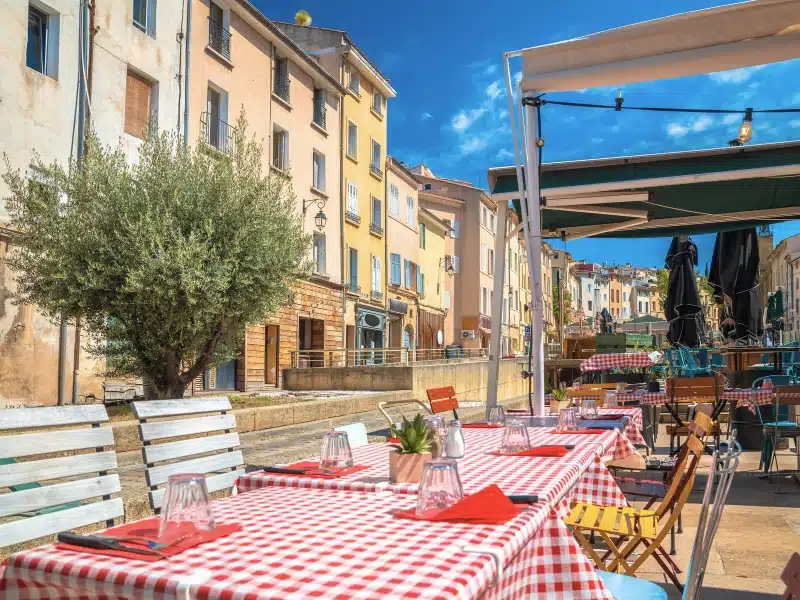
14. Experience Aix’s Nightlife
Even though Aix-en-Provence is mainly seen as a quiet, cultural destination, it also has a lively nightlife scene ranging from bars, pubs, and clubs to lounges, live music venues, and late-night cafés. There are tons of hip and trendy spots to choose from, predominantly in Place des Cardeurs, Cours Mirabeau Avenue, and Old Town.
Jazz lovers will be smitten by the talented musicians filling the air at Le Scat Jazz Club, while friends from Ireland can watch a football match and sip on a pint at O’Shannon’s Irish Pub. The younger generations will flock to IPN Club or Le Mistral for DJ nights and themed parties, while the older crowds migrate to cozier spots with mellower vibes like La Belle Epoque or L’Unic.
Sit back and enjoy a drink on a terrace while the world goes by, listen to a local band, or dance the night away until closing time.
Pro Tip: Sample a few of their famous local beverages, like the Pastis, the classic French anise-flavored spirit. This social drink is perfect for warmer evenings and is great over ice, although we much preferred out gin and tonics!
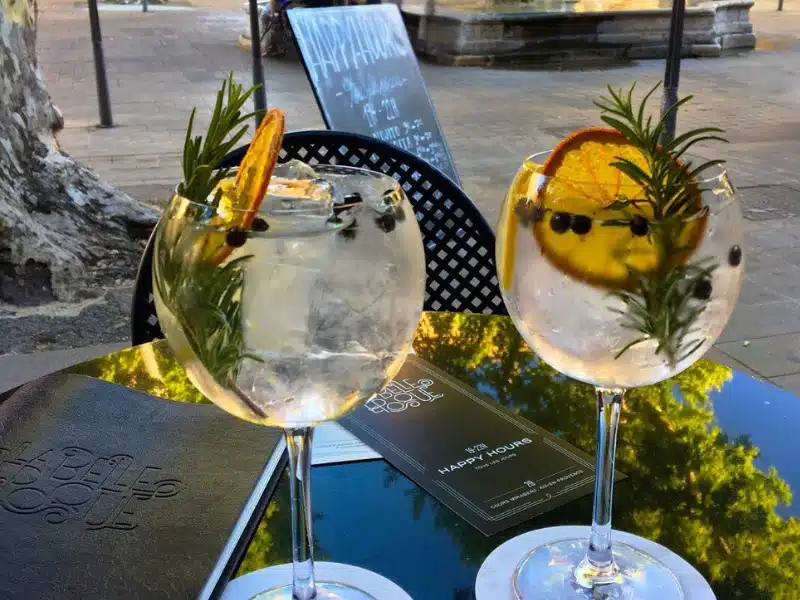
Final Thoughts of Aix-en-Provence
Hopefully, if you’ve made it this far, you’ve decided to at least consider traveling to Aix-en-Provence. Great choice! I promise it’s a destination you’d surely be saddened to miss. The amount of history, culture, stunning landscapes, tranquil overtones, friendly people, and European nuances culminate into an experience unlikely ever to be forgotten.
Even if you arrive without a plan or schedule, I promise you’ll have a great time. Heck, you could do none of the suggested activities, head straight to the tourist office, and find many other options, like admiring the architecture of the Quartier Mazarin, visiting the Fondation Vasarely, or making your perfume at Rose et Marius.
When you boil it all down, Aix is a charming city that makes every moment lived there special. The town beckons travelers with sophisticated squares, lovely cobblestone streets, and a rich past that most guests will appreciate.
With this guide, you’re now well-equipped to make the most of your visit to this enchanting corner of the world.
Looking for more travel inspiration? Check out these posts…
16 of the Best Travel Destinations in January
Our 60 Before 60 Travel Bucket List
The 16 Best Second Cities in Europe You Shouldn’t Miss
Adventure Travel Bucket List: 15 Epic Experiences in Europe
Travel Trends 2026: The Year of Mindful Escapes and Meaningful Journeys
The Ultimate Europe Travel Bucket List: 15 Classic Experiences to Inspire Your Next Trip
Love it? Pin it!
